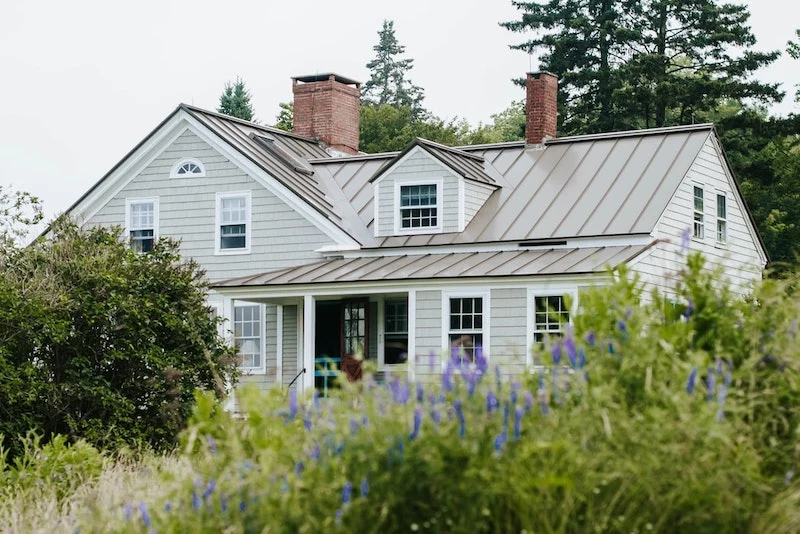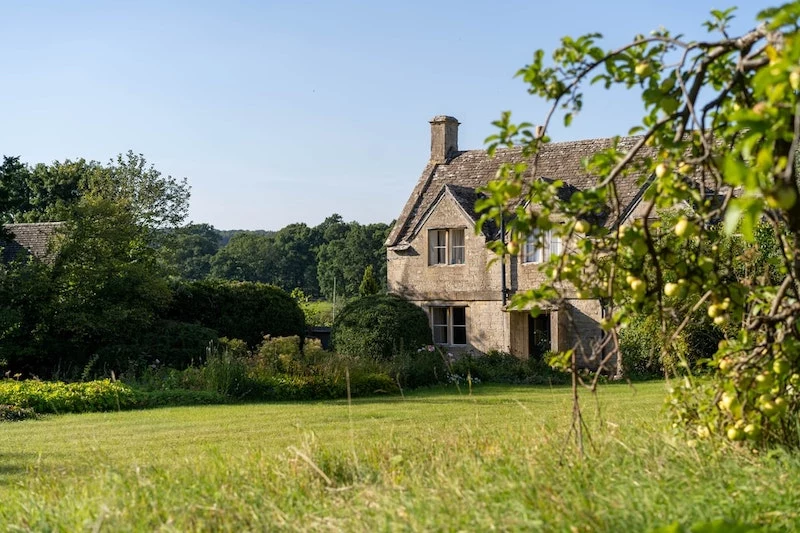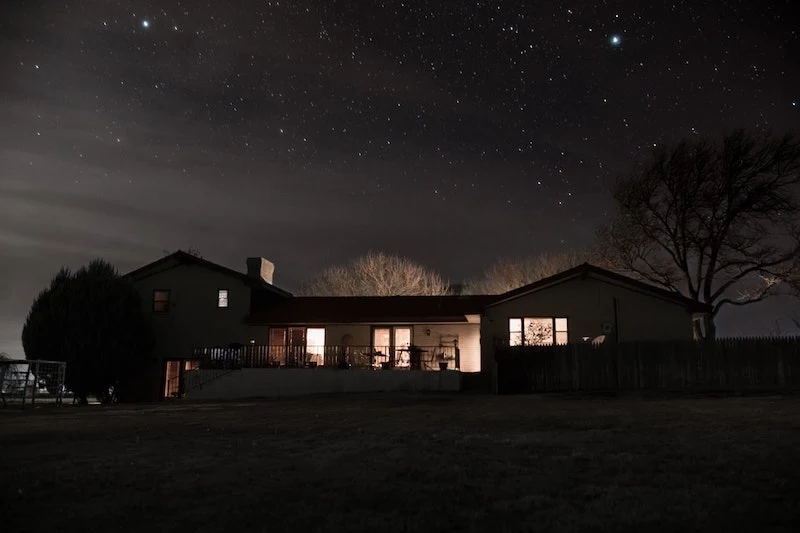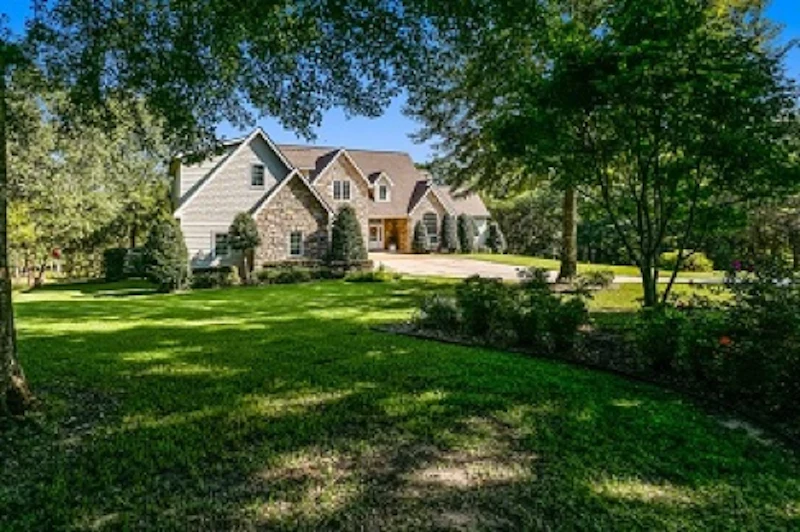Don’t Buy That Dream Land (Yet): The Gritty Truth About Building a Country Home
For what feels like a lifetime, I’ve helped people build homes far away from city lights. I’ve tromped through hundreds of acres of raw land with them, from rocky hillsides to wide-open fields. And almost everyone starts with the same picture in their head: peaceful mornings, endless views, and a real connection to nature.
In this article
That picture is beautiful, and it can absolutely be your reality. But it’s not the whole story.
Building a house in the country is a whole different ballgame than building in a suburb where you just hook up to the nearest pipes and wires. Out here, you’re often building your own utility company from the ground up. The land calls the shots. Success isn’t about ramming a pre-drawn floor plan onto a piece of property. It’s about listening to what the land is telling you and making smart calls long before anyone swings a hammer.
So, this isn’t about picking out cabinet hardware or paint swatches. This is about the gritty, foundational stuff that makes a country home work. We’re talking about the land itself, where your water comes from, where your waste goes, power, and getting in and out. Nailing these things is the difference between a country dream and a very expensive, soul-crushing nightmare. I’ve seen both, and my goal is to make sure you get the dream.

First Thing’s First: The Land is the Boss
It’s so easy to fall in love with a property because of one incredible view. I get it. But honestly, the most critical features of a rural lot are the ones you can’t see from your car.
Reading the Terrain and Soil
Every piece of land has its own personality. A great way to get to know it? Walk the whole property right after a heavy rain. See where the water flows and where it pools. Those little natural drainage paths are called swales, and any spot that stays a soggy mess is a place you definitely don’t want to put a house. A gentle slope is your best friend—it pulls water away from your foundation. A steep slope, on the other hand, can mean a nightmarishly expensive foundation, erosion issues, and a driveway that’s a beast to maintain.
But what’s underneath the grass is even more important. I always insist on a geotechnical report before a single design sketch is made. An engineer comes out, drills some holes, and tells you what you’re really dealing with. Don’t even think of this as an optional step. A good report, which might cost you between $2,500 and $5,000, is the best insurance you can buy. It’ll tell you:

- Soil Stability: Can the ground actually hold up a house? Heavy clay soils can swell and shrink, while some sandy soils can shift.
- Water Table: How close is the groundwater to the surface? A high water table is a recipe for a perpetually damp or flooded basement.
- Rock & Ledge: Hitting a massive granite ledge during excavation is a project-killer. It means bringing in heavy-duty hammers or even blasting, which can blow your site-work budget by tens of thousands of dollars.
The most crucial part of this survey, though, is the percolation test, or “perc test.” It measures how well the soil absorbs water. This is non-negotiable for your septic system. If your land fails a perc test, you might be looking at a super-expensive, specialized waste system, or you might not be able to build at all. It’s a tough conversation to have, but I’ve had to tell people their gorgeous plot of land just wouldn’t work for a standard home because the soil was all dense, non-draining clay.

Placing the House: Work with Nature, Not Against It
Once you understand the ground, you can figure out where the house should sit. The pros look at a few key things:
- The Sun: In most climates, facing the longest side of your home south is a huge win. By using plenty of windows on that side, you capture free heat and light from the low winter sun. This is called passive solar design, and it’s a classic technique for a reason—it lowers your heating bills. Well-designed roof overhangs can then block the high summer sun, keeping things cool.
- The Wind: Where do the winter winds howl from? You can use trees as a natural windbreak to shield the house. And it’s always a good idea to put your patio or deck on the sheltered side.
- The Driveway: You have to be able to get to the house. A half-mile-long driveway isn’t just expensive to build; it’s a major ongoing expense to maintain, especially after a big snowstorm.
- The View: And finally, we get to the pretty part. The goal is to frame that killer view while respecting all the practical stuff. A house on the very top of a hill has amazing views, but it’s also a target for wind and lightning and will need a long, steep, and costly driveway.

Let’s Talk Water: The Lifeline of a Rural Home
In town, water is just… there. In the country, you are the water company. For most, that means drilling a well.
Drilling a Well: A Mix of Science and Hope
A well is a deep hole drilled down into an underground, water-bearing layer of rock or sand called an aquifer. Watching it happen is fascinating. There’s a real sense of suspense as the drill grinds deeper and deeper, because there’s absolutely no guarantee.
When the driller hits a good water-bearing fracture, everyone on site breathes a sigh of relief. They then test the well’s yield in gallons per minute (GPM). For a normal home, 5 GPM is considered a solid, reliable flow. Anything less might mean you need a large holding tank to act as a buffer.
Now, for the money talk. Drilling is priced by the foot—and you pay that fee whether you hit water at 100 feet or have to go to 500 feet. In many areas, you can expect to pay anywhere from $50 to over $100 per foot. A typical well might be 150 to 400 feet deep. Do the math. I strongly advise clients to have a contingency fund of $15,000 to $30,000 set aside JUST for the well. Better to have it and not need it, right?
Quick Tip: When hiring a well driller, ask them three questions: 1) Are you licensed and insured? 2) Can you give me references for other wells you’ve drilled nearby? and 3) What’s your gut feeling on depth and cost here, knowing it’s just an estimate? Their local knowledge is pure gold.
Great, You Have Water. But Is It Safe?
Once you have water, you MUST get it tested by a certified lab. Seriously, do not skip this. I worked with a family who bought a place with an existing well and drank the water for months. Turns out it had high levels of arsenic, a natural contaminant in that region. They had to spend thousands on a remediation system they never budgeted for.
A comprehensive test should check for bacteria, nitrates (from farm runoff), minerals like iron that stain everything, pH (acidic water can eat your copper pipes), and any other contaminants common in your area. Your local health department can tell you what to look for. Just about any issue can be fixed with filtration, but you need to know what you’re fixing so you can budget for it.
By the way, in some parts of the country, especially out West, you can’t just drill a well. Water rights are a huge legal deal. Before you even think about buying, check with your state’s water resources department to ensure the property comes with the legal right to drill a well for a home.
Waste Not: The Humble Septic System
If you’re not hooked up to a city sewer, you need a septic system. A failing one isn’t just a stinky mess; it’s a biohazard and can cost a fortune to replace.
How It Works (The Short Version)
A standard septic system is pretty simple. Waste flows into a buried tank, where solids sink and bacteria get to work. The liquid then flows out into a buried set of pipes called a leach field, where it slowly seeps into the soil and gets cleaned by microbes. This is why that perc test is so critical—the soil in the leach field is doing the final, heavy lifting of purifying the water.
What Kind Do You Need? (And What Will It Cost?)
The system’s size is based on the number of bedrooms, not bathrooms. That’s a standard health code rule. A licensed designer draws up the plans based on your soil. But what if your soil isn’t great? Then you need what’s called an “engineered system.”
This is a major budget point. A conventional system, which works perfectly on a lot with good, absorbent soil, might run you $10,000 to $20,000. But if you need an engineered system—like a mound system that uses a raised sand bed, or an aerobic unit that uses oxygen—the price can easily jump to $25,000 to $40,000 or more. These systems are fantastic, but they often use electricity and require more maintenance. And don’t forget the permit! Getting a septic permit from the local health department isn’t overnight; it involves designs and approvals and can take weeks, sometimes months.
Heads up! A septic system needs care. The single most important thing you can do is have the tank pumped every 3 to 5 years to remove the sludge. If you don’t, solids will flow into your leach field and clog it permanently. Replacing a leach field is a $15,000+ mistake.
Power, Internet, and Staying Connected
Like water, we take power for granted. In the country, you need a plan.
The Grid: Not Always as Close as It Looks
See that power pole on the road? Great! But connecting isn’t always cheap. The utility company will probably give you a certain amount of free line extension—maybe a couple hundred feet. After that, you pay by the foot, and it can be anywhere from $25 to over $100 per foot. If your perfect house spot is 1,000 feet back from the road, you could be looking at a shocking bill.
Your homework for today: Make a ten-minute phone call. It’s free. Call the local power utility or co-op and ask two questions: “What is your standard footage allowance for a new residential service?” and “What is your cost-per-foot after that allowance is used up?” This call could save you from a $50,000 surprise.
The Reality of Rural Internet
That dream of working from your country porch relies on one thing: a stable internet connection. Don’t just take the real estate listing’s word for it. Your options are usually a mixed bag:
- Satellite: Services like Starlink have been a total game-changer, offering high speeds that make video calls possible. The downside? You need a clear view of the sky, the initial hardware costs a few hundred bucks, and service can get spotty in a really severe storm.
- Cellular Hotspot: If you’ve got a strong 4G or 5G signal, this can work well. But be very careful about data caps—they can sneak up on you.
- WISP (Wireless Internet Service Provider): These are local companies that beam a signal from a tower to a small receiver on your house. They can be awesome, but service is 100% dependent on having a clear line of sight to their tower.
Getting In and Out: Access and Safety
Being further from town means being further from emergency services. Planning for access isn’t just about convenience; it’s about safety.
Your Driveway is Your Lifeline
A country driveway has to handle more than just your car. It needs to support delivery trucks and, most importantly, heavy fire trucks. Many fire departments won’t even try to go down a driveway that’s too steep, too narrow, or has sharp turns.
A good driveway needs a solid, compacted gravel base and culverts to let water pass underneath. Without that, you’ll have a washed-out mess every spring. I’ve seen it happen: a client cheaped out on their driveway, maybe spending $8,000. The first big thunderstorm carved a three-foot trench right down the middle. The repair cost them $12,000. A proper installation from the start would have been about $15,000 and saved them a world of hurt.
Living with Fire and Furry Neighbors
In many areas, wildfire is a real threat. Creating “defensible space” by clearing flammable brush in zones around your home is essential. Look up the Firewise USA program for great guidelines. Using fire-resistant materials like a metal roof and fiber-cement siding is also a very smart move.
And then there’s the wildlife. It’s charming until a raccoon moves into your attic. Build a tight home that’s sealed against rodents, and if you’re in bear country, a bear-proof trash can is not optional. Oh, and maybe don’t plant a deer’s favorite salad bar right by your front porch.
Your Pre-Purchase Due Diligence Checklist
So, before you get swept away and sign the papers, take a deep breath. Here’s a quick mental checklist of the investigations you need to do, along with some ballpark numbers to keep in mind for your budget.
- Geotechnical Report & Perc Test: Absolutely essential. Budget $2,500 – $5,000.
- Property Survey: To know exactly where your lines are. Budget $1,500 – $4,000.
- Well Drilling Quote & Contingency: Get an estimate, but be prepared. Budget $15,000 – $30,000 for the whole process.
- Septic System Estimate: Based on the perc test results. Budget $10,000 for conventional, up to $40,000+ for engineered.
- Utility Connection Quote: That free phone call could reveal a cost of $0 or $50,000+. You have to know.
- Internet Availability Check: Don’t guess. Call the providers and see what’s actually available at that specific address.
Building a Home That Belongs There
Look, building a country home is an incredible journey. It’s a chance to create something that’s truly yours, in a place you love. But it demands more from you. It requires you to be a detective, a project manager, and a realist.
My best advice? Find a great local team. A builder, an excavator, and a designer who know the area are worth their weight in gold. They know the soil, the weather, the local inspectors, and the best way to get things done right the first time.
The real work starts long before the blueprint exists. By tackling the big, unglamorous questions of water, waste, power, and access first, you lay the foundation for a house that isn’t just beautiful, but one that is strong, safe, and truly at home in its landscape. It’s a lot of work upfront, but the peace of mind you get from doing it right is priceless.
Disclaimer: This article provides general information based on professional experience. Building codes, environmental regulations, and best practices vary wildly by location. Always consult with licensed local professionals—including surveyors, geotechnical engineers, designers, and contractors—and get in touch with your local building and health departments before starting any project.
Inspirational Gallery
What about my septic system?
This isn’t a one-size-fits-all situation. The choice depends entirely on your soil’s percolation rate, determined by a
The U.S. Geological Survey estimates that more than 13 million households in the country rely on private wells for their drinking water.
Joining them means becoming your own water utility. Drilling a well is an act of faith—its cost is determined by depth, and no one knows for sure how deep they’ll have to go. A shallow well might be 100 feet, while a deep one could exceed 500 feet, with costs escalating for every foot. Budget for not just the drilling but also the pump, pressure tank, and any necessary water treatment system for hardness or contaminants.
The driveway dilemma: Don’t underestimate this cost. A long, winding gravel driveway on a sloped property can easily cost more than your entire kitchen. We’re talking tens of thousands for proper grading, culverts for drainage, a solid base, and a top layer. Paving it could double that figure. Factor this in as a major line item from day one.
Before settling on a house plan, spend time on your land at different times of day. Where does the sun rise and set in winter versus summer? Where are the prevailing winds coming from? The best country homes don’t impose themselves on the landscape; they enter into a conversation with it. Orienting living spaces to capture morning light and positioning windows to frame the best views while minimizing solar heat gain in the afternoon is a form of free, natural luxury.
- Create a fire-resistant zone of at least 30 feet around your home by clearing dead vegetation and flammable debris.
- Choose fire-resistant building materials. Think fiber cement siding from James Hardie over wood, and a metal or composite roof instead of asphalt shingles.
- Ensure emergency vehicle access is clear, wide enough for a fire truck, and has a safe turnaround space.
In rural areas, this isn’t just a building code item; it’s essential peace of mind.
For power: You can pay a utility company a staggering amount (sometimes $50-$100 per foot) to extend power lines to your site.
Or you can make your own: A modern off-grid setup with a solar array, a battery bank like the Tesla Powerwall, and a propane backup generator from a brand like Generac or Kohler offers true independence.
The upfront cost can be high, but it provides silent, reliable power and insulates you from grid outages and rising energy prices.
One of the biggest gambles is water. While dowsing is a charming folk tradition, a far more reliable approach is to consult a hydrogeologist. They analyze geological maps and local well data to identify the most promising locations to drill. This preliminary study can save you thousands by preventing a
Your country home will face more extreme weather than its suburban counterpart—harsher sun, stronger winds, and more direct rain. Choose exterior materials accordingly.
- Siding: Fiber cement and high-quality engineered wood offer superior durability and lower maintenance than traditional wood siding.
- Roofing: A standing-seam metal roof can last over 50 years, sheds snow and water efficiently, and is highly fire-resistant, making it a smart long-term investment for a rural build.
Beyond the septic tank itself, consider the future. Is there a suitable, accessible secondary location on your property for a replacement drain field? Regulations often require this, and planning for it now prevents a crisis later if your primary field fails in 20 or 30 years. It’s a long-term strategy that ensures the lasting viability of your country home.










